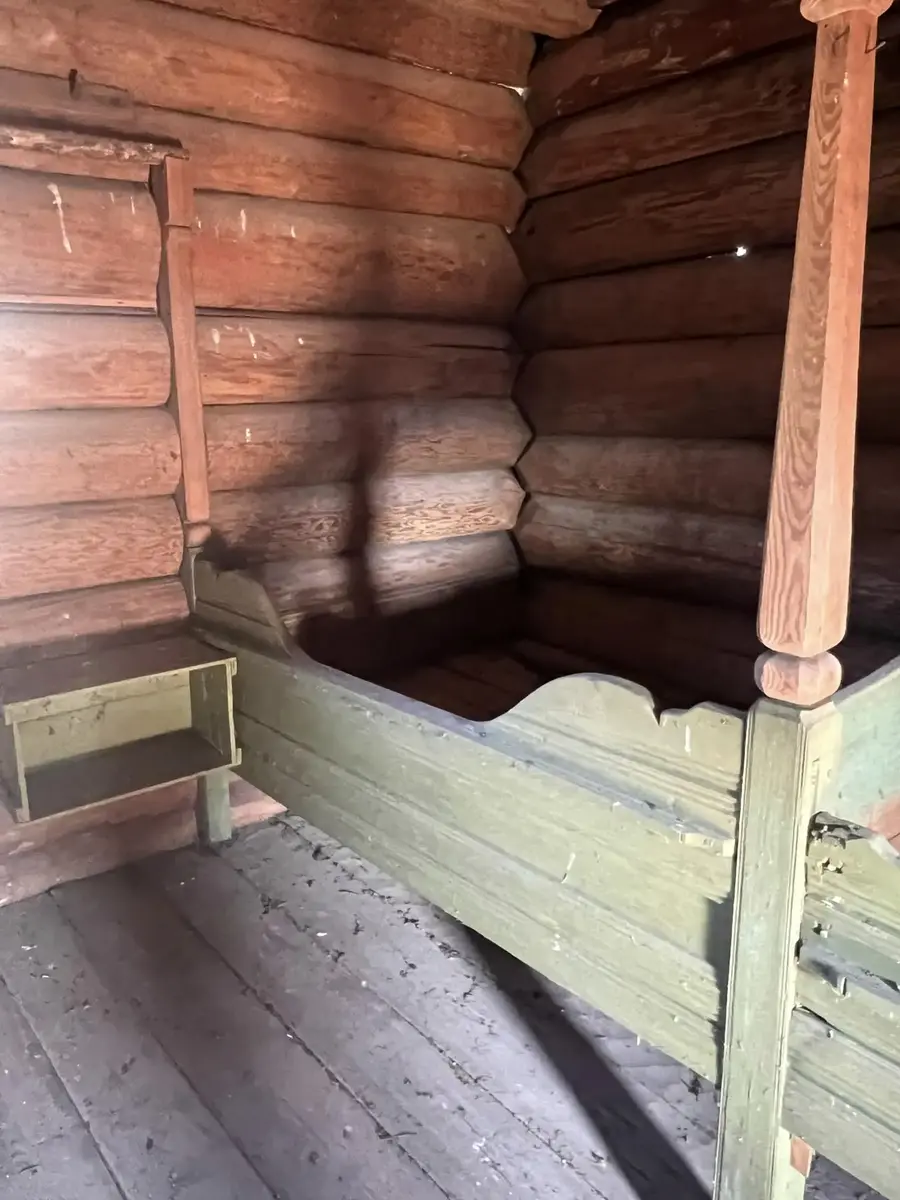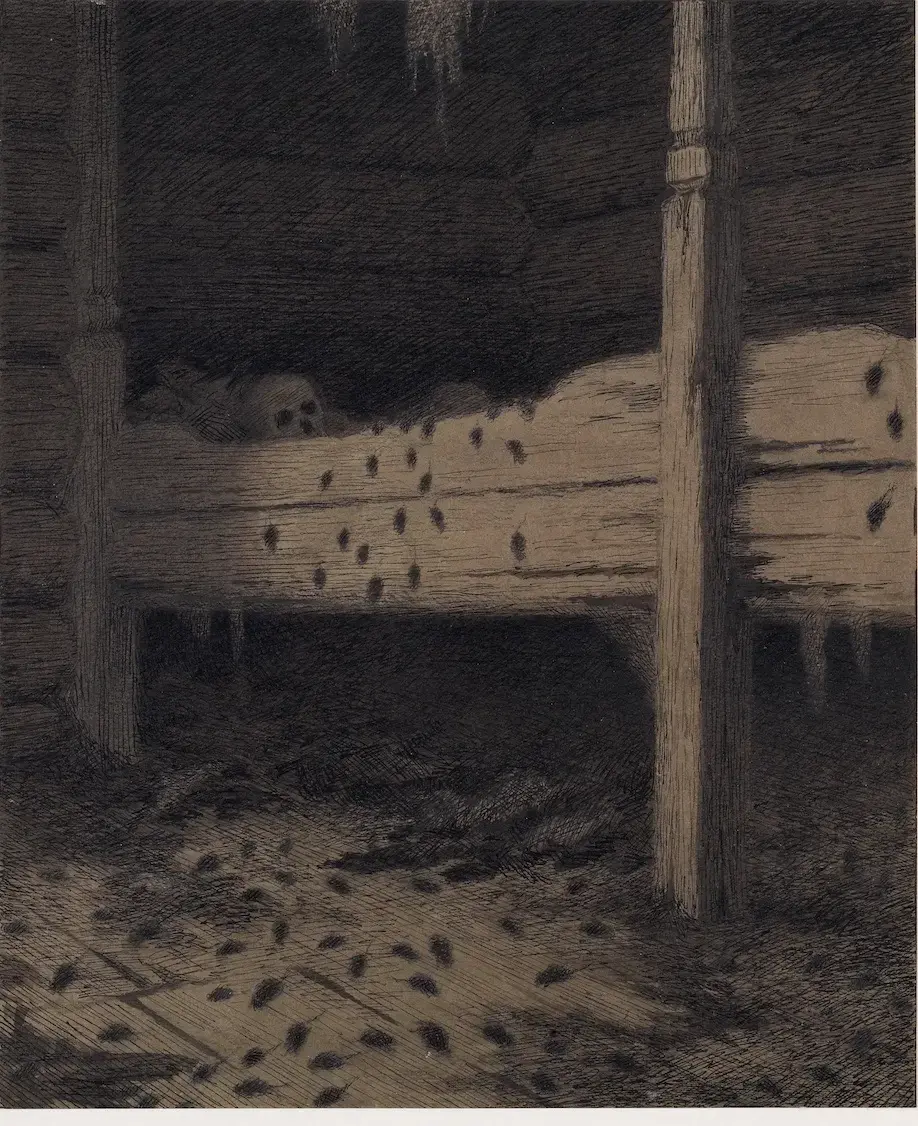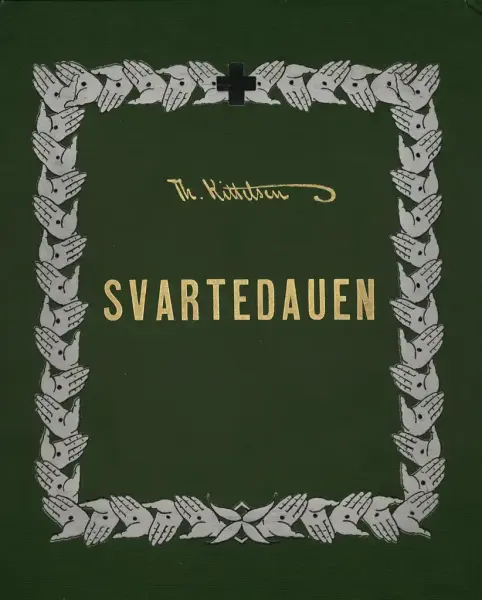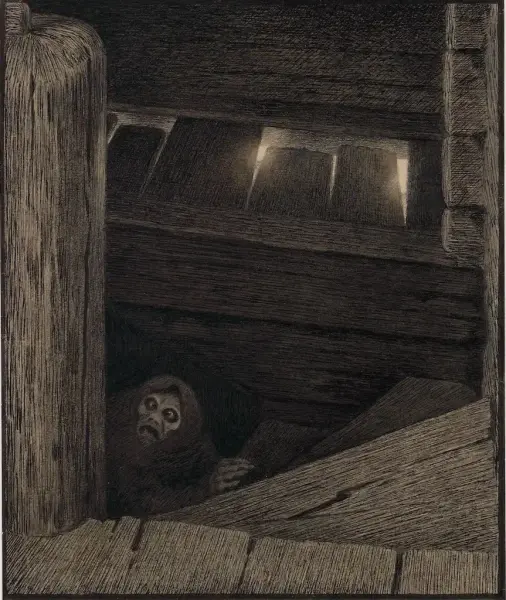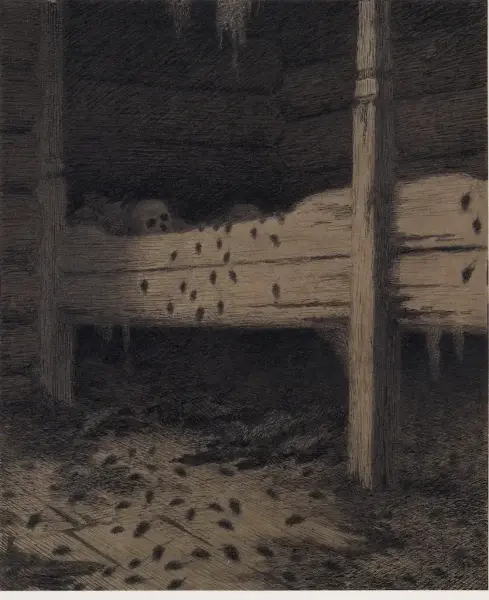Autumn evening
Autumn has come with dark nights. Old Knut sits by the fireplace, staring into the warmth, pondering and thinking.
This is how the book "The Black Death" begins, written and illustrated by Th. Kittelsen, based on Andreas Faye's "Norwegian Folk Tales" which was published in 1843.
The first drawings for "Svartedauen" were made on Skåtøy as early as 1889. But it was not until he came to the old sheriff's estate Sole in Eggedal in 1896, with its dilapidated buildings, nooks and crannies, that he found the final motifs for the book. In the stable he found motifs for two of the most famous illustrations in the book, "Pesta i Trappa" and "Musstad". The stable stands there to this day and it is not difficult to see the inspiration for these illustrations.
- 1/2
Theodor Kittelsen - 2/2
The manuscript went through several publishers before it was finally published by J.M. Stenersen in 1900. But the work was not a financial success and sales were very poor. Part of the print run remained in the material and was not bound up until 1990 when Ringstrøms Atikvariat was offered the remains. An almost unbelievable fate for a true masterpiece.
No other of Kittelsen's books matured as slowly as "The Black Death", hardly anything he put all his abilities and strength into to such an extent, and it can be safely said that he never reached higher as a black and white artist than in this deeply original and imaginative work, which stands in an absolutely unique position in Norwegian book art. With psychic empathy he immersed himself in this gloomy chapter in our history, the unimaginable that happened when an entire people with a type of material was in danger of being virtually wiped out, an event that left deep traces behind it right up to our own time. In contrast to the "national history", the Black Death or the great death of men as it was most often called, came to concern every single Norwegian, poor or rich, no matter how secluded and remote he lived.
